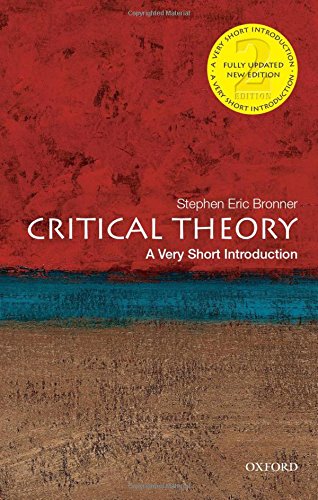There’s been an awful lot of loose talk about “critical race theory” (CRT) and how it is being taught in everywhere from grade school to college. Most of the people who use the term have little idea what CRT actually is – instead it’s used as a catch-all for any kind of talk or lessons about the history of race in the United States that deals with racism and white supremecy.
So let’s try to take a quick look at what critical theory in general is about before we get to critical race theory in specific is about. (I’ve heard jumping into CRT from scratch is like jumping into advanced electrical engineering.)
 In the decades between World War I and World War II came the rise of a revolution in social science thinking known as critical theory. Originated by a group of German scholars known as the Frankfurt School, these cultural critics were trying to make sense of a changing world that was leaving people alienated, exploited, and repressed with no good way of making sense of what was happening. Many of these scholars were Marxist in their political and social views, and deeply concerned by the upheavals brought about by the end of World War I. These upheavals led to the rise of fascism in some parts of Europe and communism divorced from Karl Marx’s ideas in others. There are several key principles to this approach:
In the decades between World War I and World War II came the rise of a revolution in social science thinking known as critical theory. Originated by a group of German scholars known as the Frankfurt School, these cultural critics were trying to make sense of a changing world that was leaving people alienated, exploited, and repressed with no good way of making sense of what was happening. Many of these scholars were Marxist in their political and social views, and deeply concerned by the upheavals brought about by the end of World War I. These upheavals led to the rise of fascism in some parts of Europe and communism divorced from Karl Marx’s ideas in others. There are several key principles to this approach:
- There are serious problems that people suffer that come from exploitation and the division of labor.
- People are treated as “things” to be used rather than individuals who have value.
- You can’t make sense out of ideas and events if you take them out of their historical context.
- Society is coming to be dominated by a culture industry (what we might call the mass media) that takes cultural ideas, turns them into commodities, and sells them in a way to make the maximum amount of money. This separates ideas from the people who produce them.
- You cannot separate facts from the values attached to them and the circumstances from which these facts emerged.
Political science scholar Stephen Bronner writes in his book CRITICAL THEORY A Very Short Introduction that it is out of critical theory that people saw the rise of environmentalism, racial equality, sexual equality, and the examination of privilege. While critical theory cannot always help us understand ideas themselves, it can, Bronner writes, help us understand where they come from:
“To put it crudely, critical theory can offer fruitful perspectives on the historical genesis and social uses of, say, the theory of relativity introduced by Albert Einstein. But it should not attempt to make philosophical judgments about its truth character.”
So if you really want to understand CRT, first do a little reading on critical theory, and Bronner’s book is a great place to start.
(NEXT – What is Critical Race Theory)
